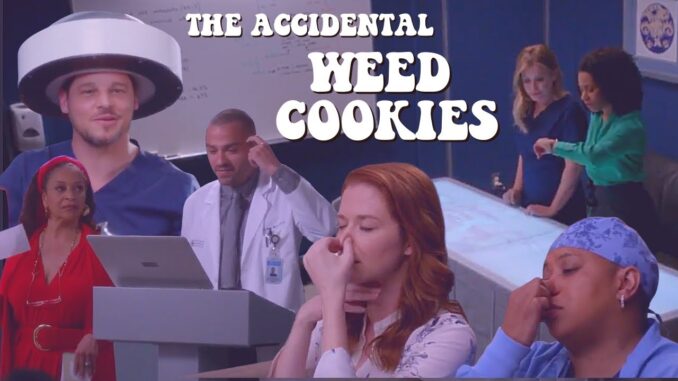
The Cascade of Crazy: When Grey Sloan Went Absolutely, Utterly Unhinged
Grey Sloan Memorial Hospital, a hallowed (and frequently blood-soaked) hall of medical miracles, has always flirted with the edge. From interns sleeping with attendings to explosive device removals in chests, drama has been a constant IV drip, keeping the hospital perpetually teetering on the brink of chaos. But there are moments, specific eras, when the delicate balance tips, and Grey Sloan doesn't just flirt with unhinged; it plunges headfirst into a swirling vortex of the bizarre, the irrational, and the downright insane. This essay will explore the anatomy of those moments, dissecting the societal pressures, personal tragedies, and professional rivalries that collectively contribute to the spectacular, and often heartbreaking, implosion of sanity at Grey Sloan.
One prime example of this descent into madness stems from the aftermath of tragedy. Consider the plane crash that robbed them of Lexie and Mark. The collective grief, a raw and festering wound, manifested in ways that were, frankly, bonkers. Meredith, already prone to emotional constipation, became a shut-in, burying herself in work and bottling up her emotions until they erupted in volcanic, often inappropriate, outbursts. Cristina, stripped of her best friend, doubled down on her surgical ambitions, her brilliance becoming a razor-sharp weapon of self-preservation that alienated even her closest allies. Derek, haunted by the guilt of surviving, became increasingly erratic, his need for control morphing into a suffocating obsession that threatened his relationship with Meredith. The crash wasn't just a physical tragedy; it was a psychological one, shattering the foundations of their sanity and leaving them all scrambling for purchase on a rapidly collapsing reality.
Beyond grief, the relentless pressure cooker of the medical profession itself contributes significantly to the hospital's unhinged reputation. The hours are brutal, the stakes are impossibly high, and the decisions made in seconds can determine life or death. This constant exposure to trauma, coupled with the inherent ego of surgeons, creates a breeding ground for competition and recklessness. Think back to the countless instances where doctors, driven by ambition or the need to prove themselves, pushed the boundaries of acceptable medical practice. From risky experimental surgeries to blatant acts of sabotage, the pressure to succeed often trumped ethical considerations, leading to decisions that were, at best, morally questionable and, at worst, downright deranged. The "cutthroat" atmosphere, a staple of Grey Sloan, wasn't just a metaphor; it was a tangible force that warped personalities and fueled irrational behavior.
Furthermore, the complex web of personal relationships interwoven within the hospital walls adds another layer to the insanity. Grey Sloan isn't just a workplace; it's a petri dish of intertwined lives, where professional boundaries are constantly blurred and romantic entanglements often lead to professional conflict. The constant drama, the betrayals, the love triangles – all played out against the backdrop of life-and-death situations – creates an environment where even the most stable individuals are susceptible to losing their grip. Imagine having to face your ex-lover, now married to your best friend, across the operating table while trying to save a patient's life. It's a recipe for emotional implosion, a scenario that played out with alarming frequency at Grey Sloan.
Finally, the societal pressures and expectations placed upon doctors, particularly female doctors, contributed to the feeling that everyone was slowly going mad. The struggle to balance a demanding career with personal life, the constant scrutiny, and the inherent sexism within the medical field took a toll. Characters like Miranda Bailey, fiercely intelligent and dedicated, often found themselves navigating a system that seemed designed to undermine their success, leading to moments of frustration, anger, and behavior that, while understandable, contributed to the overall sense of unease. The fight for recognition and respect in a male-dominated profession added another layer of stress to an already volatile environment, pushing even the most resilient individuals to the brink.
In conclusion, the unhinged atmosphere of Grey Sloan Memorial Hospital isn't a random occurrence; it's a carefully constructed tapestry woven from grief, ambition, personal drama, and societal pressures. It's a reflection of the intense environment in which these doctors operate, where the line between sanity and madness often blurs. While the hospital may heal bodies, it often leaves its inhabitants scarred and emotionally battered, perpetually teetering on the edge of another spectacular, and utterly insane, implosion. And perhaps, in the messy, chaotic reality of Grey Sloan, we find a strange comfort, a recognition that even in the face of unimaginable pressure, the human spirit, however fractured, can still persevere.
